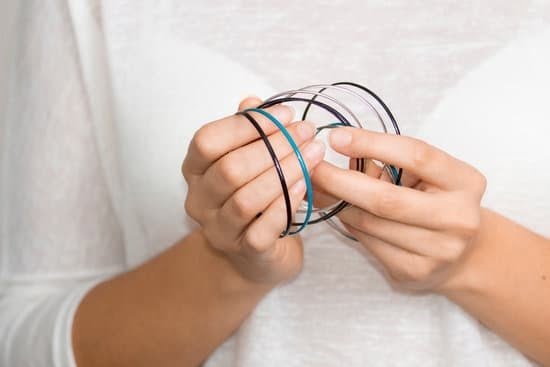Metal clay is a specialized material that is made from microscopic metal particles mixed with a water-based Organic Binder to create a moldable dough-like material. This substance can be molded into almost any shape you desire and when dried, it will form an exact replica of the original item.
Metal clay first saw commercial use in 1995, and it has since revolutionized the jewelry making world. Metal Clay allows you to craft high-quality pieces without the need for expensive tools or prior experience.
The Process of Working With Metal Clay – Tips on how to work with metal clay and create beautiful pieces of jewelry
The process of working with metal clay is relatively straightforward, though there are some tips to keep in mind when beginning your project. The first step is always to knead the metal clay until it becomes pliable and free from lumps. Once ready, roll out the clay into desired thickness; your design should take into account proportionality when planning out your items.
After creating your model on the platform, you should then allow the piece to dry for several hours before firing it in a kiln at temperatures up to 1500 degrees celsius. Finally, once cooled down add any additional detail as required through sanding or polishing.
Accesorizing with Metal Clay – Ideas about what kind of pieces you can make using metal clay
Once all these steps are completed, you will have some unique yet eye-catching pieces that no one else has. Some popular items created using metal clay include earrings, necklaces, charms and pendants. Each of these pieces can be customized further by adding delicate features such as engravings or gem stones into subtle grooves cut beforehand while handling the wet product.
Furthermore, if shaped properly multiple components can be safely soldered together using different techniques using appropriate tools. Through this method two separate components can come together to create fascinating unified wearable designs far more intricate than what was originally planned.
Gather the Supplies Needed
Creating jewelry with metal clay is a fun and creative process. First, you will need to gather the supplies needed to make your jewelry.
There are several types of metal clays available on the market, so do some research and decide which one best fits your project before you make a purchase. The most common type of metal clay used for making jewelry is PMC (Precious Metal Clay), but there are other types such as Cooper Clay and BronzeClay that contain different precious metals.
When picking out the supplies for your project, it’s important to follow the instructions on the package for mixing and using the clay. In addition to the clay itself, you may need additional tools like rolling pins or stamps depending on what type of clay you use.
You may also choose to purchase a texture sheet or two to create interesting designs in the finished product. A toothbrush is also helpful for brushing away any excess particles from your piece when it’s finished before firing it.
Once all of your supplies have been purchased, you can begin to work on creating your jewelry. Shaping and forming metal clays is similar in a lot of ways to working with traditional ceramics, so if you are familiar with this craft you might find it easier than starting from scratch.
If not, there are lots of online tutorials available to help guide you throughout each step in the process until your project lives up to its desired mark. With patience and creativity, soon enough you can create your own unique pieces adding special dimension, depth and beauty to any outfit.
Conditioning the Clay
One of the first steps to creating jewelry with metal clay is conditioning the clay. Depending on what kind of clay you purchased, it may come as a small lump or pieces. Start by breaking it into smaller pieces and kneading between your hands for about a minute, until it develops a soft and pliable texture. If you find that the clay still feels too dry, mist some water over it in small increments until the desired texture is achieved.
After conditioning the clay, use a rolling pin to roll out the clay into your desired shape and thickness. You can place sandpaper on a work surface so the surface is not scratched when rolling out your material. When rolling out smaller shapes such as earrings and thinner pendants, you can use templates or cutters to get a more exact shape.
The next step is to completely dry the material. The amount of time needed for full drying will depend on the size of your piece and climate conditions; however air-drying should take between 8 – 24 hours depending upon how thick or thin your piece is.
Once the clay is dried completely, it’s ready to be Kiln Fired, which turns it into metal. This process starts by placing your piece in an electronically-controlled kiln chamber; adjust your kiln according to instructions provided along with your metal clay type (examples range from 1300F-1650F). Insufficient heat may cause issues during firing, resulting in breakage or poor quality products; excess heat can also damage or disfigure any intricacy you had planned for within pieces before firing.
After heating adjust your kilns cooling mechanism as per instructions given with metal type used for best cold working results such as bending/stamping etc Once cooled down, carefully remove sided pieces from kiln bed (keeping protective gloves/goggles on at all times). Fill up tumbling machine with rough filings/crimping media and tumble finished pieces until all abrasives have removed completely leaving cleanly banded together sterling silver casted piece behind.
Designing and Embellishing
Metal clays are a popular material used in jewelry-making and other craft projects. Metal clay is easy to shape and manipulate, allowing you to create intricate and complex designs. The use of metal clay allows you to create pieces with the same look and feel of traditional metal jewelry, but at a fraction of the cost. With metal clay, you can make unique pieces that are sure to turn heads-with no welding or soldering necessary.
To get started with creating your own metal clay jewelry, it is important to know the right techniques for working with the clay. Many people choose to start by simply pressing shapes into the clay with their fingers or a variety of tools. To make a more intricate form, you may want to consider using molds or forming wire frames for shaping your creation.
When using these methods, it is helpful to use some kind of release agent on the mold or frame before placing the clay inside. This will help your design come out cleanly from the form when finished firing.
Another important step in making metal clay jewelry is embellishing and texturing your designs. Embellishing is often done by adding small details like beads and charms made from polymer clays which add visual interest after firing in a kiln or oven. Texturing can be created using various tools such as hammers, stamps, paper punches, and even household items like kitchen sponges and pebbles.
Each of these techniques can help enhance the uniqueness of your pieces while still maintaining an overall level of consistency across all of them. Once fired in its final form, you will have a strong piece ready for wear that retains those beautiful textures and embellishments you worked so hard to create.
Firing and Finishing
After creating a jewelry piece with metal clay, the next step of the process is firing it. Firing burns away the organic material from the metal clay and sets the silver in its place. The best way to fire metal clays is with a dedicated kiln, as this will give you flawless results every time. If a kiln isn’t available for use, you can still use a torch or candle to fire your jewelry.
Before firing your jewelry, you’ll want to ensure that you have all of your materials on hand – protective eye wear, kiln shelves (optional) and triangular posts for texture work. When using a torch or candle to fire your work, there are some safety precautions to keep in mind – always fire outside or in a well-ventilated area and never leave your pieces unattended while they are being fired.
Once firing is complete, the last step is to finish your pieces. After the fired pieces come out of the kiln or flame, these can be polished to create different finishes depending upon what type of look you desire. Rubbing compounds are commonly used by jewelers; firstly starting with something that has coarse grit and gradually moving down through medium grit until you achieve the desired finish.
You can also use diamond abrasive paper if it’s either pre-polished or entirely raw silver since it will result in more consistent polishing throughout the piece. To remove any oxidization that might occur during heating and cooling processes, steel wool may be used as well – but make sure not to scrub too hard so that areas where desgn details have been applied remain intact.
Finishing Techniques
Metal clay is a unique medium because it allows the artist to create jewelry out of almost any metal, particularly silver and gold. For example, if an individual desires to have a large ring made with gemstones and various other elements, then metal clay is the medium that can be used. This versatility makes metal clay a very desirable material for jewelry makers.
Another great advantage of using metal clay for jewelry making is the ability to mold it into any desired shape. After the bead or ring has been made from the raw material, it can be polished to reduce any roughness on its surface.
Additionally, patina and other tarnishing techniques can also be utilized to bring out the desired look. Depending on how much one desires to alter the color of their finished product, polishing and dyeing can create amazing results in their accessories.
For those wishing to work with metal clays at home there are plenty of opportunities available today. There are specialized classes available in most craft stores as well as online tutorials that provide detailed step-by-step instructions on how to create projects from this versatile material.
Additionally, YouTube tutorials have become increasingly popular and feature some fantastic visual instruction on various techniques related with working with this medium at home safely and correctly. After mastering some basic techniques such as squeezing, rolling, shaping and cutting the clay, an individual can begin creating stunning pieces of jewelry with relative ease and confidence.
Attaching Findings
Metal clay is a material that can be used to create beautiful, one-of-a-kind jewelry pieces. It consists of tiny particles of metals such as silver, gold and copper suspended in an organic binder, giving it the ability to shape and harden like ceramic clay when heated.
One of the key elements to creating quality jewelry with metal clay is how you attach findings. Findings are components used for attaching other materials or for making jewelry and will add another dimension to your pieces.
For starters, jump rings are versatile pieces that can be used to connect multiple components together, such as hooking earrings on your ear lobe. They are basically a circular shaped loop that open and close with pliers or jewelry cutters. To attach jump rings securely you should use tweezers or needle nose pliers to shape two holes for each side of the jump ring carefully in the metal Clay piece (when dry).
Put some clear nail varnish onto each side of the jump ring before inserting them into the prepared holes. After placing the loops into the drilled item tightly, make sure they move freely so your design has movement. With some practice it will become easier over time.
Ear wires should be visible when completed, featuring a long hooked wire at one end for attaching onto an ear lobe and a flat coil at the other end as decoration. Ear wires can be made from metal clay by molding thin strips around small dowels or knitting needles until desired shape is achieved, making sure both ends slightly overlap in size when complete.
Once dry use sand paper to smooth out any rough edges then attach them properly following the same instructions as mentioned above with the jump rings.
Bale’s are usually tiny attachments applied onto hooks attached behind pendants so they can be hung across chains or necklaces smoothly; adding textural beauty to your jewellery design. Again start by carefully pinching one side of metal Clay followed by forming desired bale shapes allow plenty of time for drying before fixing onto jewellery pieces permanently on both sides with glue where needed (if applicable).
Again take extra caution while handling these components since they tend to break easily if mishandled.
Finishing off handcrafted jewellery products requires attention to detail in order increase durability and ensure longevity over several years. Nowadays it is becoming increasingly difficult (and costly) finding unique items for yourself or someone special Using metal Clay techniques you can create custom items using a few simple steps and take pride knowing you have crafted something special from scratch.
Safety Tips
When working with metal clay, safety must be a top priority. Wearing protective gear such as safety glasses and a respirator is a must. These items will protect your eyes and lungs from any particles that are created while firing the pieces of metal clay.
Additionally, proper ventilation should be ensured when heating pieces of metal clay, as this can create fumes that are detrimental if inhaled over time. As sparks can fly, it is important to wear protective clothing such as long sleeves and gloves, as well as an apron to guard against heat. Working in an area away from any flammable materials is also essential when creating jewelry with metal clay.
Once all safety precautions have been taken into consideration, you can begin the process of making jewelry with metal clay. Before handling the clay, make sure to lay down some craft paper or plastic wrap on your work surface in order to contain any messes that may occur during the process. This will also help protect any other surfaces from the possible corrosive residue left behind by fired metals.
A roll of millimeter sheet and wet/dry sandpaper are helpful for finishing small details on jewelry items during assembly or shaping of the final product before firing. Tapes and foils may be used for more complex shape-forming techniques; these allow for larger components and complex shapes with small parts to be created quickly and efficiently using molds or templates.
When firing pieces made from metal clay, it is necessary to use either a kiln or a torch. As there are many different types of clays used within the industry, some clays may require both at different steps in order to reach their desired hardness and temperature levels appropriately.
Most brands provide specific instructions concerning their firing methods and temperatures; this information should always be followed closely in order to ensure that each part functions as expected when completed. Finally, having on hand some polishing materials post-firing will help bring out unique details that cannot always be seen in un-polished forms; this has the potential to add considerable value to the finished piece of jewelry from an aesthetic standpoint.

Welcome to my jewelry blog! My name is Sarah and I am the owner of this blog.
I love making jewelry and sharing my creations with others.
So whether you’re someone who loves wearing jewelry yourself or simply enjoys learning about it, be sure to check out my blog for insightful posts on everything related to this exciting topic!





